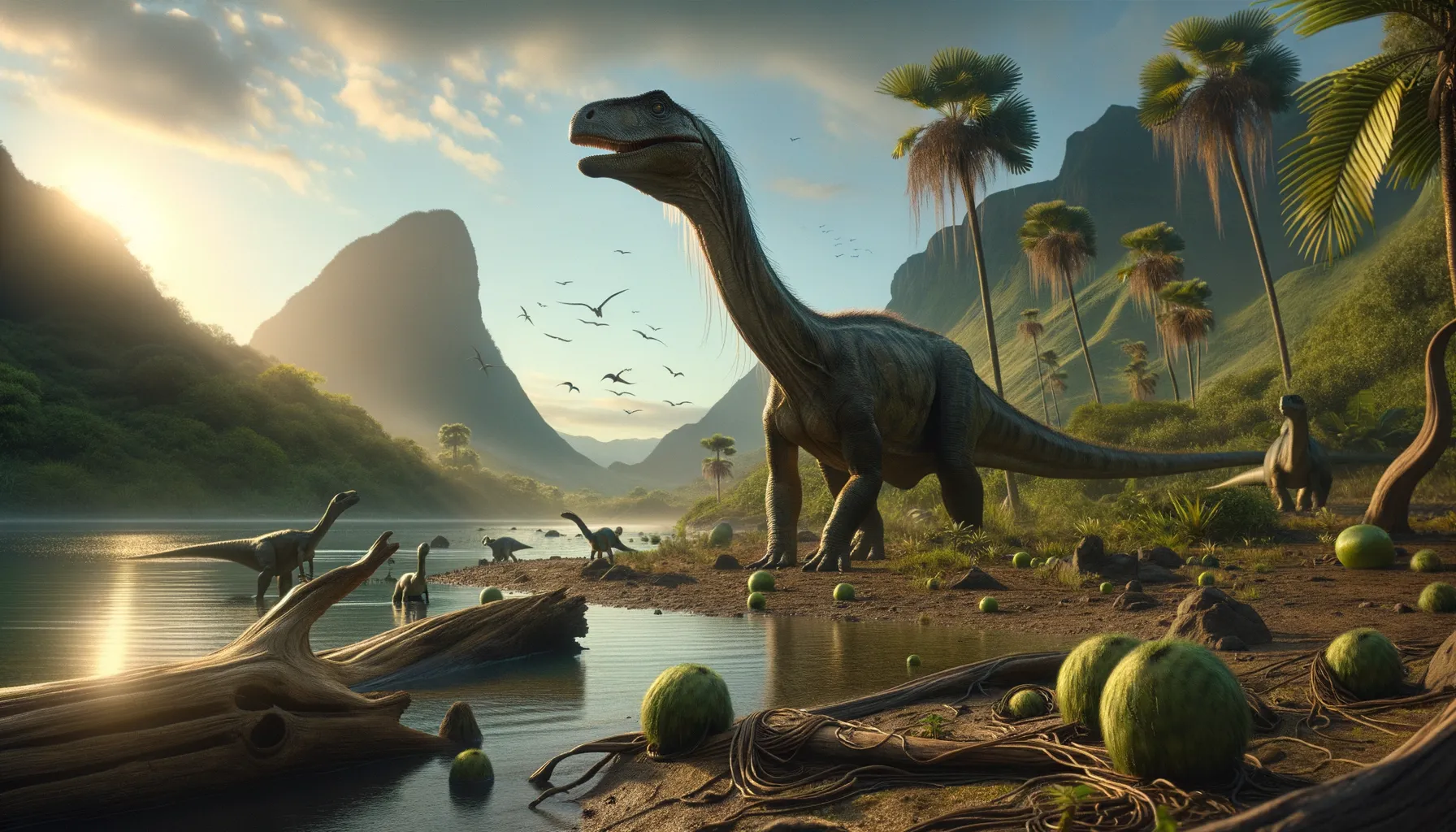
Mussaurus
The tiny dino with a big story.
Period
Jurassic
Length
Around 3 meters (10 feet) long.
Height
Approximately 1 meter (3.3 feet) tall.
Weight
Adults weighed around 70 kilograms (154 pounds).
Mussaurus, meaning "mouse lizard," is a small dinosaur known for its long neck and herbivorous diet. It lived during the early Jurassic period in what is now South America. Fossils show that Mussaurus started out very small, hence its name, but could grow to be much larger. The discovery of fossilized nests and juveniles suggests it may have had some social structures.
Diet
Mussaurus was a herbivore, eating mainly plants. Its long neck helped it reach higher vegetation, making it efficient in its diet.
Hunting
Being a plant-eater, Mussaurus did not hunt other animals. Instead, it grazed on available flora, foraging for the best leafy greens it could find.
Environmental challenges
Mussaurus faced environmental challenges such as fluctuating climates and predatory threats. The need to find sufficient food sources in a changing landscape meant it had to adapt to survive. Predators in its environment required vigilance and perhaps hiding strategies.
Speed
Likely slow due to its small size.
Lifespan
Estimated to live around 20-30 years.
First discovery
Discovered in Argentina in the 1970s.
Fun Facts
- Mussaurus, whose name means 'mouse lizard', is named for its small size at hatching.
- This dinosaur lived around 200 million years ago during the early Jurassic period.
- Despite starting as a tiny hatchling, Mussaurus grew into a much larger creature.
- Mussaurus is an important dinosaur for studying early dinosaur social behavior.
- Fossils of Mussaurus often include both juveniles and adults, suggesting they lived in herds.
- Its fossils were first discovered in Argentina in the 1970s.
- The discovery of Mussaurus hatchlings helped scientists understand more about dinosaur growth stages.
Growth and Development
Mussaurus hatched from eggs and initially was very small, often described as mouse-sized. As they grew, their bones matured into a robust framework capable of supporting their long necks. Fossil evidence of different growth stages suggests rapid growth in their early years.
Habitat
Mussaurus lived in what is now South America, a region that was lush with vegetation during the Jurassic. This habitat provided ample food but also required Mussaurus to navigate among larger species. The environment included varied terrains, from dense forests to more open plains.
Interaction with other species
Mussaurus likely lived alongside various other herbivorous and carnivorous dinosaurs. Some fossil evidence suggests they may have nested in colonies, indicating possible interactions within their own species. Interspecies dynamics would have involved avoiding predators while possibly coexisting with other herbivores.
Natural lifespan
Mussaurus might have naturally lived for up to 30 years.
Reproduction
Evidence suggests Mussaurus laid eggs in nests, indicating some group nesting behavior. Their reproductive cycle likely involved nurturing young in protective environments until they matured enough to venture out.
Social behaviour
There is some evidence that Mussaurus exhibited social behaviors, possibly living in groups. The discovery of communal nests suggests some level of social structure, perhaps to protect young from predators.
Fossil locations
Mussaurus fossils have been primarily found in Argentina. These locations have yielded both juvenile and adult specimens, offering a comprehensive look at their development. Fossilized nests help paint a picture of their life cycles and social behavior.
